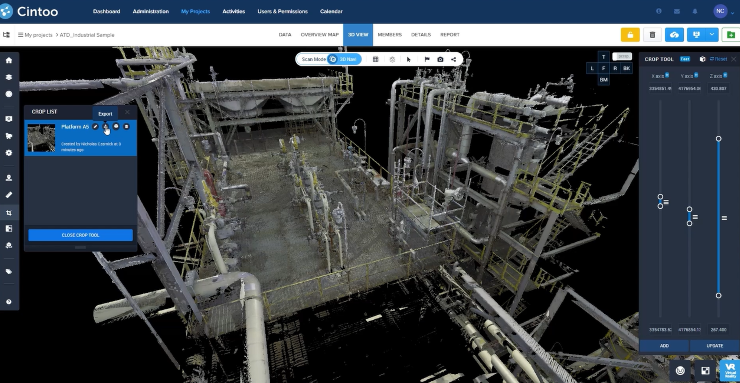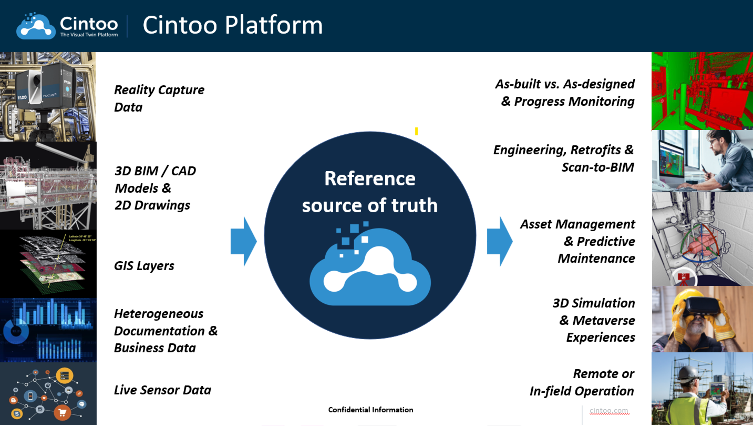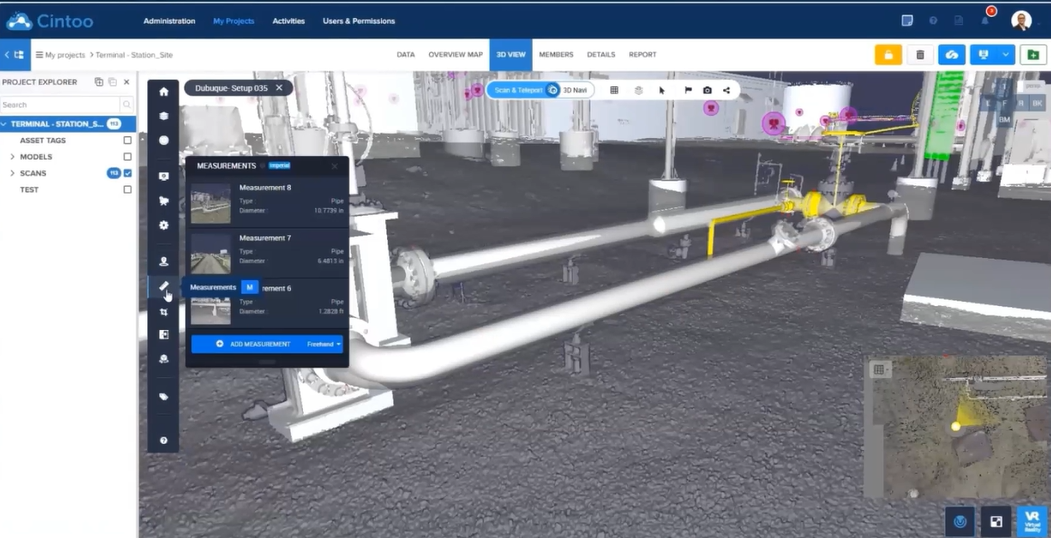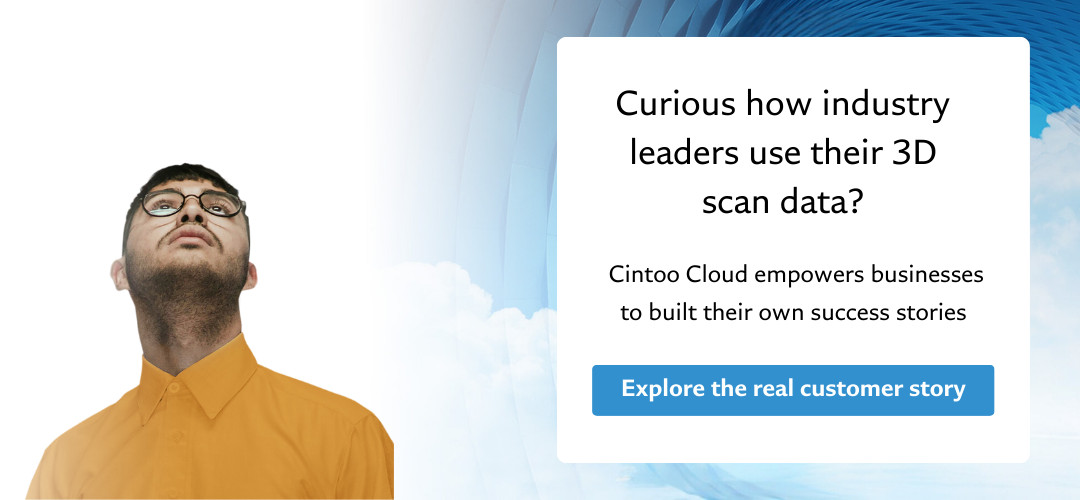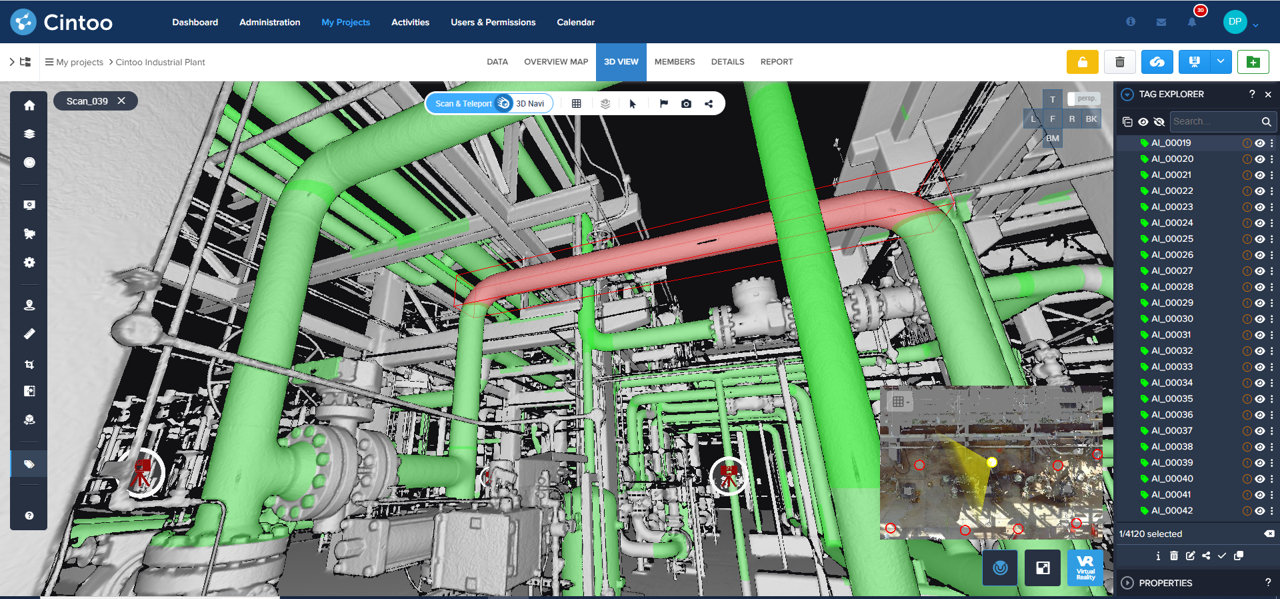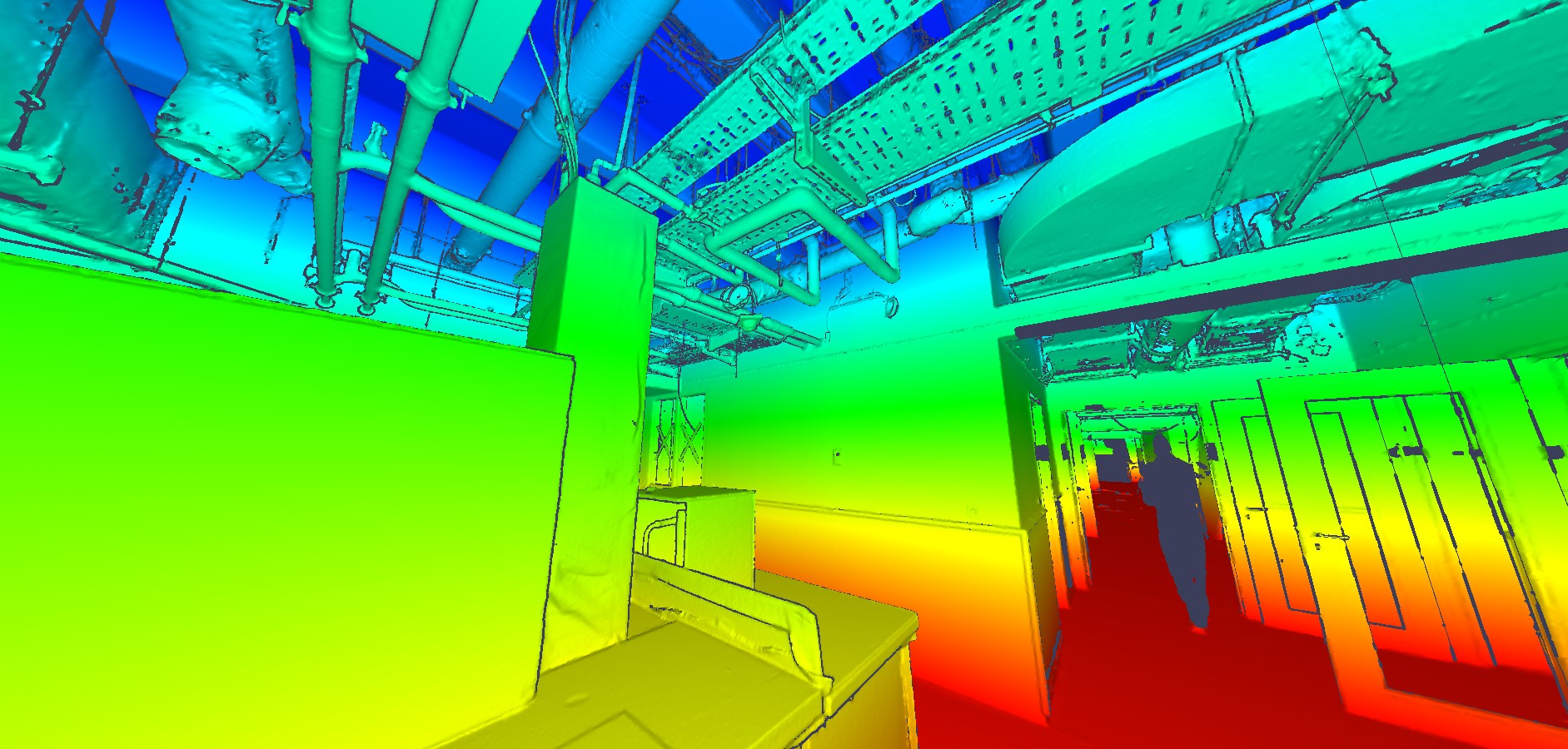
How to turn point cloud data into digitally shareable 3D mesh
Every time a laser scan of an existing site or environment is done, a point cloud is generated, which is basically a configuration of data points arranged from a physical place. The laser scan picks up the data points and combines them to create digital models. Point clouds to meshes are invaluable to modern construction projects, architecture, and engineering, enabling professionals to capture 3D representations of physical places.
The key is using point cloud to mesh technology to convert point clouds into 3D meshes. Point clouds in their original form store the location for millions of points deduced by the laser scanner. Meshes on the other hand convert these points into triangles which loses none of the information about location, RGB, and intensity values, but instead makes them much smaller, lighter, and faster to work with. This ultimately facilitates a much faster streaming experience, enabling you to move around the digital representation with no compromise to accuracy!
Use point cloud data, converted into high-resolution 3D meshes, to create digital versions of physical places.
Why Point Cloud to Meshes Matter in Digital Construction Projects
Meshes take complex geometry and make the data sets simple and flexible for increased visualization. It means that cumbersome point cloud data which is difficult to share and move around can be converted into 3D meshes which facilitates sharing, distribution, and navigation more seamlessly. While eliminating the burden and poor quality of point cloud data, meshes enable professionals to do so much more. These benefits include faster documentation, visualization, monitoring, management, and analysis of all their crucial project sites.
For everyday users, those in construction or engineering roles, BIM/CAD designers, surveyors, or data managers, the conversion of point clouds to mesh data means that they can have improved access to huge site facilities, like automotive plants that typically render millions of square feet in point cloud data. Converting point clouds to meshes helps professionals see the layout in real-time, navigate around seamlessly, and share that data with their other involved stakeholders.
View fine details from point cloud data with the ability for anyone, whether experts or non-experts, to walk through a digital project site.
Meshes also reduce challenges in detecting and mediating errors, saving professionals time and money. With a focus on centralizing the data, all professionals involved in the project can have access to the same view while overlaying models with no compromise to quality, detecting issues, and using tools that are facilitated easier in the mesh version. Users will find their challenges reduced since meshes significantly make the data more robust, shareable, actionable, and accessible.
Why You Should Be Converting Every Point Cloud to a Mesh and How To Do It
Point cloud data can greatly increase the ROI on construction projects when used effectively. Again, without compromising the specific geometry behind point cloud data, 3D meshes create the ideal digital environments to manage the evolution of a project.
This is how you can easily funnel the point cloud to mesh process:
- Capture the environment.
- Output the scan as a point cloud data file (like LAS or PLY – Cintoo can convert any point cloud data, no matter the scanner source).
- Use a 3D scan data processing platform, like Cintoo.
- Easily and instantly convert the point cloud data to 3D meshes by using the capabilities of the 3D scan data processing platform.
- Share meshes with other stakeholders, overlay models, use platform tools like measurements or annotations, and process data to be used in other integrations or applications, like Revit.
Cintoo is a powerful 3D scan data processing platform that uses its innovative TurboMesh technology to instantly convert cumbersome point cloud data into high-quality 3D meshes with no compromise to accuracy! Cintoo is a cloud-based platform, meaning any user can access the 3D meshes through a web browser, making sharing and accessibility easy. It also means that Cintoo can act as your central repository for unlimited point cloud data.
All capabilities come to fruition within the Cintoo platform, creating a reference source of truth of your project site within a digital setting.
Further, use other Cintoo capabilities to level up your projects, such as clash detection, automatic measurements, annotations and detection tools. This means that you can have all your project tools in one place, making facilitation, sharing, and distribution that much more effective.
What Point Cloud to Mesh Conversion Looks Like In Real Life
Converting point clouds to mesh models is a transformative process for industries like oil and gas, offering critical support for infrastructure planning, remote facility management, and safety compliance.
First, when point cloud data is converted to 3D meshes, the 3D model becomes easier to interpret and manipulate. Engineers and planners can assess the existing infrastructure, pinpoint potential areas for expansion, and accurately plan new installations. Moreover, asset-intensive environments can be hard to understand and make sense of. Those unfamiliar with technical data still need to visualize and understand the layout of large plant facilities, so the clarity from point cloud to mesh conversion is user-friendly, so much so that decisions can be organized around all stakeholders, regardless of their technical abilities.
Lastly, meshes provide real-world simulations that can improve safety for all those involved in huge energy facilities. Simulations based on lifelike meshes enable engineers to test structural loads, wind flow, seismic impacts, and other stressors on planned infrastructure, ultimately leading to safer, more efficient designs
Explore how you can use Cintoo to seamlessly convert point clouds to meshes with no compromise to accuracy or accessibility. Also discover the unlimited potential of your 3D scan data through new methods for facilitation and decision-making.
Get an inside look at all asset-intensive environments where data can be shared and acted upon seamlessly.
Want to see how other companies utilize the power of point cloud to mesh technology to level up their workflows? Learn how SSOE, one of the largest international architecture and engineering firms, uses point cloud-to-mesh conversion to enable entire team collaboration.
